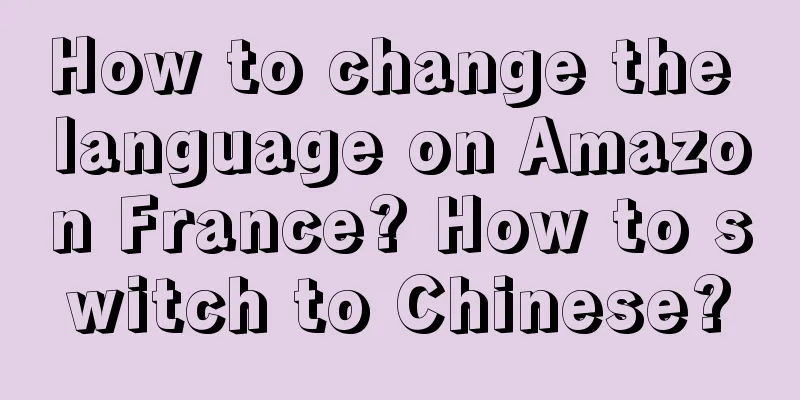Four key points to improve the value of private domain users

When emphasizing the most critical refined operation in private domain operations, most companies will mention a simple and effective strategy - user segmentation. Correspondingly, the value contribution of private domain users also varies. When a user enters a brand's private domain, there are several key stages in the process of growing from an ordinary user level to the KOC level that can contribute the greatest value to the company. 01 Make friends with users and build close relationshipsThe core of private domain is to establish long-term close relationships with users, and making friends with users, providing them with high-quality service experience, and providing users with emotional value are the keys to enhancing the value of private domain users. 1) Make friends with users and build close relationshipsIn private domain operations, companies can often make friends with users and gradually establish close relationships by providing better services and products. Xiaomi is a case that is often mentioned: In the early days of Xiaomi's brand establishment, it actively established a fan culture. For example, the MIUI forum: Before Xiaomi launched its first mobile phone, it gathered a group of technology enthusiasts through the MIUI forum. These users participated in the development and improvement of the MIUI operating system and became Xiaomi's first batch of loyal fans. In this process, Xiaomi mainly took two actions to establish a close relationship with users. First, product design, co-creation and service. First, the open product co-creation model gives users a sense of belonging to the brand. Allowing users to participate in product testing and feedback not only improves the user experience of the product, but also makes users feel that they are part of product development. Second, it provides cost-effective products, allowing users to become loyal recommenders of the brand. Xiaomi has attracted a large number of users with cost-effective products, and these users have become loyal recommenders of the brand because of the quality and price advantages of the products. The third is to provide high-quality after-sales service, so that users can feel the care from the brand. The most direct aspect of this is after-sales service, which ensures that the problems encountered by users during the use of the product can be solved in a timely manner. Second, key touch actions in user operations. First, through social media interaction, Xiaomi continuously builds its brand image. Xiaomi fully utilizes the Weibo platform to interact with users, release product information, collect user feedback, and respond to user questions and needs in a timely manner. Second, by building the founder's IP, Xiaomi has brought users closer. Xiaomi has established the personal IP of its founder Lei Jun, such as the founder Lei Jun's own Douyin. By establishing the personal IP of the brand president, Xiaomi has shortened the distance between users and the brand and established a close relationship with users through the real IP. Third, we increase user stickiness through rich community activities. For example, Xiaomi regularly holds offline activities, such as the "Let's Go, Mi Fans" event, inviting users to participate and enhancing their sense of belonging and loyalty to the brand. We also hold various interactive activities through online communities, such as user story sharing and product usage skills exchanges, to increase user activity and loyalty. Fourth, establish an incentive mechanism to encourage users to share. For example, Xiaomi created the "Mi Fans Day" to provide users with special discounts and activities on this day to encourage users to share their Xiaomi product experiences. 2) Provide emotional value to usersLet’s first look at the case of Guiyou Community: This team of only 5 people has served more than 40,000 high-end users in 5 years. The main product is a 21-day fat loss training camp, which comes with some self-developed food products. The entire project has strong emotional value attributes from the product itself to the service method, and the team pays special attention to providing companionship and attention to users. Although emotional value sounds abstract, it is easy to understand when it comes to practical actions. Ximen Chuihua, the founder of Guiyou Community, said: Emotional value is when a person is unable to make a decision, or has doubts about himself, or has some pessimistic views on life, we as friends help him. This support and encouragement can help them make better decisions when faced with temptation. Nowadays, brands that emphasize emotional value can often resonate with consumers, giving them a strong sense of belonging and identity, and at the same time have a competitive advantage. The social attributes of private domains naturally help brands and businesses to exert the power of emotional value, which may be involved in products, services, operations and other aspects. 02 Refined operations make activity, conversion and repeat purchase more efficientIn user operations, especially in the private domain, refined operations should be carried out according to cycles, which will achieve twice the result with half the effort in terms of activity, conversion and repeat purchase. When an excellent private domain team conducts user operations, from the moment a new user adds a fan to the Nth day thereafter, there are detailed words, processes, operation skills and methods, and detailed SOP documents. Moreover, companies in different industries and with different characteristics adopt completely different strategies and methods in the cycle. Time is the most basic clue, and the actions triggered by different user behaviors will be combined to form the design of the user operation cycle. Summarize 3 representative cases: 1) Internet insurance industry case based on 1V1In this case, although the number of user reach decreased by 30% within two months, user retention increased by more than 30%, and the LTV of a single user increased by more than 60%. In this case, the 1V1 contact strategy is based on two refined operation logics. One is the "T+" strategy with time as the main line and thousands of faces for thousands of people (T+ is the first letter of Time, indicating time), and the other is the intelligent push triggered by user behavior. It is suitable for brands that use 1V1 as the main operation strategy. (Note: "T+1" is the first day of contact with the user, "T+2" is the second day of contact with the user, etc.) The essence of the "T+" strategy is the timeline. The operational focus is different at different time points. The early stage focuses on the first order conversion, while the mid-to-late stage focuses on retention, additional purchases, and repeat purchases. The basic architecture of this operational logic can be seen as a fish skeleton, with the fish bones being T+1, T+2, etc., and branches can be extended infinitely on the main line. At the same time, it is necessary to extract the most real needs of users, simulate the needs that users may have, and combine users, products, and scenarios. This means that the product can match people with needs, rather than these people having no needs at all and then having this need through repeated education. For example, in the insurance industry, 30 out of 100 users originally have the need to buy critical illness insurance and are able to afford it, so what the operator has to do is to find these people. The copywriting and rhetoric in the operation are only superficial, and the underlying logic is more important. 2) Case study of online education operation with the goal of starting from the endThis project increased the number of paying users from 40,000 to 1.2 million through private domain operations, achieving a 30-fold increase. The entire online education project took only 53 days and the entire team consisted of 55 people. The goal-oriented operation starts from the end, pursues the maximization of value per unit time, and maximizes the operation value within the cycle by enabling a single user to make more purchases per unit time. The core logic of this case is the combination of "AX (product) + BY (activity) + CZ (price)". The ultimate result is the number of paying users, not the number of paying users. Whether a person can create more paying users is more important. This project consists of three main links in a closed loop. First, the growth team fills the private pool with water, then the intermediate screening team screens low-priced paying users, and then the conversion team guides further conversions, and finally returns. Here, it is emphasized that operations should be goal- and result-oriented. At the beginning, the core goals and data of the project should be determined, and the core data should be used as the final result to deduce the process data. 3) Take beauty and cosmetics communities and supermarket communities as examplesThese cases all discuss how to build the relationship foundation of the community, how to build a private domain exclusive incentive system, and the operation and maintenance of the community KOC. This set of operation methods was proposed by "233 Brand Private Domain". It is based on the overall value performance of the community, including the consumption value, content value, interaction value, and social value comprehensive score of users in the community, and defines the golden performance score of each brand community. The ultimate goal is to extend the entire operation cycle. This strategy is suitable for brands that focus on community operations. The overall value of a community can be measured using the private domain user value system to calculate whether the community is in its golden age: by evaluating the value of individual users in the group, calculating the score of the community to which they belong by weighted average, and then judging the operation stage of the group based on the standard line of the percentage of active groups (or absolute value) of the community as a whole. In actual operations, the entire operation cycle of users involves at least key nodes, key behaviors, and key scenarios. At the same time, only the appropriate user operation cycle is the best. Operators need to closely combine brand characteristics and user groups to build refined user operation strategies. Of course, all of this needs to be based on the "key point one" mentioned above, that is, following the principle of "making friends with users and establishing close relationships." 03 Select and cultivate brand KOC to amplify private domain valueThe most ideal relationship between enterprises and private domain users is that the two complement each other. That is, enterprises can provide users with more cost-effective products, and users can also help enterprises produce more cost-effective products through feedback, spontaneous promotion and suggestions. One of the key groups is KOC. They usually have a higher level of awareness and stickiness for the company's products than ordinary users, and hope that the company can grow better and that the products it provides can better meet user needs. KOCs are also very influential in their respective professional fields, and are more conducive to the promotion and dissemination of products in vertical fields. By giving full play to the role of KOC, the value of private domains can be easily amplified. Therefore, it is very important to identify and cultivate KOCs and let them become the driving force of brand communication. So how can we find the real KOC group of the brand? What are the selection criteria for KOCs in different industries and products? And how to do the daily management and maintenance after finding the KOC group? Previously, Baozun Xunxin mentioned two core evaluation reference indicators that can help brands find real KOCs: The first is to see whether the number of KOC’s fans matches the brand’s consideration scope; the second is to see the attributes of the content created by the KOC itself and its indispensability in brand marketing activities. From the two dimensions of fans and content, brands need to know: the full data of the KOC’s inherent fan attributes, the information and attributes of the people the brand needs to influence, and the degree of preference among the target population for the content published by the KOC or the content planned by the brand. Next, let’s take a closer look at MINISO’s KOC mining and maintenance case. When selecting KOCs, MINISO attaches great importance to their activity and loyalty, as well as their ability to produce content. First of all, MINISO’s clear KOC portrait is the real users it screens out from the private domain. These users continue to amplify the brand’s voice in the public domain through amateur accounts. The notable characteristics of KOCs are that they are 16-30 years old, mainly female, have their own social platform accounts (Xiaohongshu/Tik Tok/Weibo), like to share, and have consumed MINISO many times. The private domain is the basis for MINISO to find KOCs. There are a large number of potential "grass-planting officers" in the 18 million user pool. MINISO conducts preliminary screening in the private domain through grass-planting activities, and then operates in layers through the RFM model. During this period, there are constant additions and eliminations. After several rounds, those who remain are the real KOCs, which is the action taken in the second key point. Finally, there are three selection criteria for MINISO KOC: 1) Activity: Users themselves are highly active, as reflected in their frequent participation in MINISO-related activities. 2) Loyalty: They have a high degree of recognition and loyalty to the brand and will participate in MINISO’s promotional activities many times. 3) Ability to produce content: Able to independently produce UGC, and the notes will have a certain amount of interaction after being released to the public domain, which can help Miniso amplify its voice in the public domain. So after finding the brand’s real KOC group, how do we operate and manage KOC in daily activities? MINISO's daily management and maintenance system for KOC also provides us with a reference: That is, the RFM model is adopted, and there are upgrade, elimination, and blacklisting mechanisms. Currently, these mechanisms have three types of activities: new product evaluation, evergreen product experience, and full category sharing.
In daily operations, the number of KOCs, the number of UGC articles, and the number of public domain exposures are the core indicators of the KOC project. Therefore, the focus of KOC operations is to cultivate more valuable KOCs from new KOCs, and produce a large number of high-quality products through them. The daily operation and maintenance of MINISO products is to communicate with KOCs 1V1 through WeChat for Business. For important KOCs, they will be invited to participate in more experience activities and given certain traffic support; for potential KOCs, they will be given guidance on content direction, and experience activity qualifications will be used to drive user enthusiasm; for new KOCs, a grade system and welfare incentives will be used to encourage continuous participation. In addition, making good products is the foundation. By combining products with IP and relying on the "tap water" of KOC in the community, MINISO can achieve the fastest fission. This interest-based product concept relies on interest consumption to spread, gathers a large number of interested people, and realizes multi-level diffusion and dissemination. 04 Increase referral rate and expand salesAnother key point to improving the value of private domain users is to increase user referrals and expand sales. Let us explain in detail with examples: Previously, when Jianshi communicated with Baodao Glasses, it was found that their user referral rate could reach 50%, and the main revenue of its offline stores was almost all generated from referrals and repeat purchases. Such data was achieved thanks to Baodao Glasses' operation strategy targeting the "old and young" target users. When Baodao Glasses' service model was a retail model, it focused on achieving user services through efficiency and cheapness. Efficiency ensured basic user satisfaction, and cheapness ensured that users could bring referrals. Conventional strategic gameplay included buy one get one free. The core strategy for the old and the young is to rely on "effects" to drive the entire user life cycle. It will define the level of service effectiveness when the user first enters the store and the level of service effectiveness when the user returns to the store for the second time. For example, for young users, there is an internal myopia prevention and control indicator to ensure that the degree of myopia in both eyes of users increases within 75 degrees per year, that is, every time the user returns to the store for a recheck, it can be guaranteed that the degree does not increase. And from the time the user leaves the store to the time he returns to the store for a recheck, Baodao Glasses will have human intervention, such as asking the user to do outdoor sports training, or return to the store regularly for visual training, etc., all of which are to ensure that the user's vision does not increase. From the entire operation to fission, Baodao Glasses also relies on effect-driven. When users are highly satisfied with the effect, they are asked to help the company make referrals. Later, users who came to the store were more spontaneous, which is also the way the company expects: the real fission is not passive fission, but users are willing to take the initiative to introduce. In the case of "He Xiaoyu", a formula for measuring the profits brought by referrals is mentioned: referral turnover = number of reachable loyal users × referral rate × user forwarding page UV × page conversion rate. This formula connects brands, fans, and self-media into a loop, and each variable can become the starting point for the next one. When companies are able to realize and focus on any point, the growth flywheel of referrals will accelerate. The more they do, the faster they will turn. Among them, it also relies on the third key point, the cultivation of KOC, which is the "number of loyal users that can be reached" in the formula. In addition, Youzan's new retail service's men's clothing brand "Micro Luxury Zero" encourages core customers to become the brand's "brand spokespersons". By paying 99 yuan, they can get a comfortable and high-quality gift package, which can not only be used for self-enjoyment, but also given as a gift to friends or customers. This strategy not only deepens customer loyalty to the brand, but also uses the customer's social network to bring new potential customers to the brand, achieving a fission effect of user growth. These "brand spokespersons" leverage their own social influence and use the tools and resources provided by the brand to convert ordinary users into active promoters of the brand, thereby effectively expanding the brand's customer base and market influence. |
>>: "Little Brother Yang" has a big fall, revealing the three sins of live streaming sales
Recommend
New strategy for high customer orders in 2024: Red Book content seeding, private domain service closing
In the new era of digital marketing, how can we ef...
10 very interesting copywriting
The author shared 10 very interesting copywritings...
Data analysis empowers sales, these strategies are amazing
In today's highly competitive business environ...
Why do young people on Xiaohongshu and Douyin flock to ski resorts?
With the arrival of winter, skiing, once considere...
What is a brand? (2023 edition)
We often talk about brands, but it is difficult to...
Does cross-border e-commerce not require products? How to do cross-border e-commerce without sources of goods?
With the popularization of the Internet and the de...
How to apply for Amazon Transparency Program? How to apply?
Amazon has both the Zero Plan and the Transparency...
What kind of platform is Foreign Trade Soho? How can individuals receive foreign trade orders?
Foreign trade SOHO, or the way a small home office...
What is New Retail? What are the supply chain systems in New Retail?
New retail, an innovative concept proposed by Jack...
What are the payment methods on Amazon? What are the payment methods?
If we want to shop online, we must first understan...
In 2025, will brand awareness building return to the center of attention?
With the popularization of the Internet and the ch...
Standing next to the boss for a long time, you will be the second
What should companies do in the face of fierce com...
Without joint ventures, they cannot squeeze into the consumer market.
Some time ago, IP collaboration has become a key s...
How to register a local store in Taiwan on Shopee? How to select products on Shopee Taiwan?
Shopee is an e-commerce platform headquartered in ...
How low can the eBay positive review rate be? Does a low eBay positive review rate have a big impact?
Every merchant hopes that his store will have a hi...









